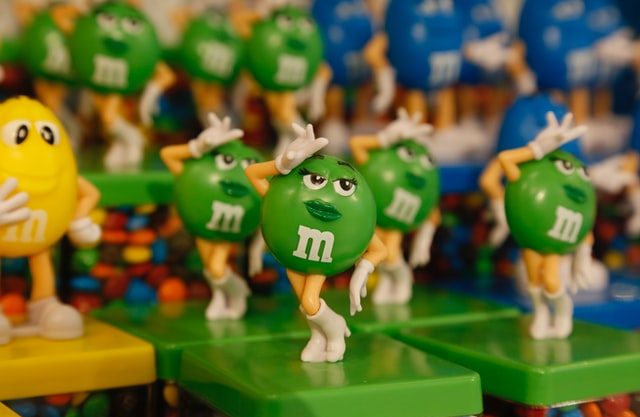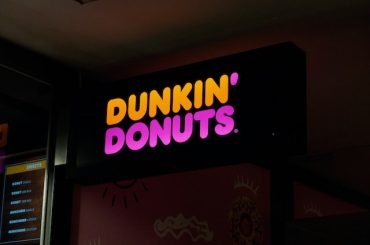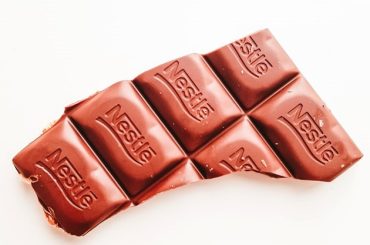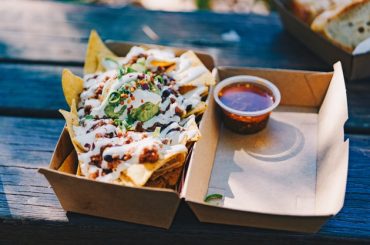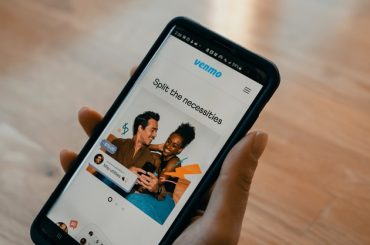If I tell you that a person born in the 1940s is highly trendy and living with the times, you might find it hard to believe. Yet, here is a brand in its 80s and is still doing all the right things to be as relevant today as it was during its launch.
I am talking about M&M’s – the flagship product of Mars Wrigley Confectionery (part of $38 bn. Mars Group) – that made its debut way back in the ’40s. Mars Inc: Unveiling the Mystery of a Chocolate-y Empire
The brand knows how to remain part of the culture and conversations for every generation. It has not let newer brands or competitors put a dent in its strong brand love.
So, what is it about these multi-colored chocolates that consumers can’t seem to get enough of? The answer lies in the colorful marketing strategy of M&M’s
Brief Background
In the 1930s Spanish Civil War, Forrest Mars saw soldiers eating chocolate pellets with a hard shell to carry these chocolates easily without the risk of melting. This gave him an idea, and the M&M’s Plain Chocolate Candies were introduced in the USA market in 1941.
The product was a hit with the American soldiers. The U.S. Army became its first big customer as it gave the soldiers an option to carry chocolate in tropical climates without melting.
In 1949, the brand introduced the tagline “Melt in your mouth, not in your hand,” and this led to a considerable increase in its sales because it delivered on a solid insight, especially from parents who did not like to see their children making a mess when eating chocolate.
M&M’s are button-shaped chocolate-filled candies with hard shells surrounding a filling which varies depending upon the type of M&M’s. The product is available in various colors – red, yellow, orange, brown, green, and blue.
Initially, there was only one M&M Plain Chocolate candy that had a semi-sweet chocolate filling. Then, in 1954 M&M’s introduced a variation through the launch of Peanut Chocolate Candies.
Within a decade, the brand became so popular that M&M’s started stamping each candy with the letter ‘m’ to help the customer find the real M&M’s from inferior imitators. They started marketing this through the campaign ‘Look for them on every piece.’
The initials of M&M’s are inspired by the names of its creators – Forrest Mars and Bruce Murrie.
M&M’s success: Its Colorful Marketing Strategy
The big reason for M&M’s success has been its creative and integrated marketing across touchpoints year after year that has led them to achieve pop-culture status:
1. The Characters
A story on M&M’s is incomplete without acknowledging the role of M&M characters in winning the hearts of the consumers.
After being in the market for half a century, M&M’s struggled in the ’90s and lost share to other chocolate players. They knew that they had to do something, so they briefed global advertising agency BBDO to help them develop a marketing solution that could drive sales.
Building on the ’50s ads that had used two characters, BBDO came up with the concept of M&M characters. Each candy was given its own character, inspired by its color and with its own personality trait:
- Red (the sarcastic one),
- Yellow (the simple one
- Blue (the cool one),
- Green (the sexy one),
- Brown (the serious one),
- and Orange (the nervous one).
The rest, as they say, is history!
Soon, the characters became central to the brand’s communication, packaging, and advertising. From the 2000s onwards, almost every M&M’s T.V. commercial has featured the M&M’s mascots, especially the Red and the Yellow, their most famous characters. The humorous characters are so popular that a compilation of the funniest M&M’s ads on YouTube has more than 43 million views!
In fact, the characters also appear as spokes-candies, responding to customers on social media in their quirky manner.
Right from its debut year, there have been colors like Brown, Yellow, and Green that have been part of the M&M’s pack, while others like Violet and Tan just made a brief appearance. Colors like Orange and Blue made a late entry but have stuck around since then. From 1941 until 1969, each package contained M&M’s in five different colors; when red M&M’s were reintroduced in 1987, they were added as a sixth color instead of replacing any existing colors.

2. Embracing Social Media
The brand has always been ahead of the game before others. M&M’s saw the power of social media way back in 2008 and created a Twitter account as well as a Facebook page. Over the years, the brand has used Facebook extensively to promote its campaigns, and it has also built Facebook pages for some of its characters.
A few years back, M&M’s character Miss Green hosted a ‘Tour of Ireland’ selfie competition on Facebook and Snapchat as part of the country’s St. Patrick’s Day celebration. These campaigns were a huge success, helping the brand increase its market penetration by 17% and entering the elite list of the top 10 chocolate brands in Ireland.
Over the years, the brand has built a significant presence across all the popular social media channels:
- The main brand page on Facebook – M&M’s USA has more than 9.6 million followers.
- On its Instagram account, the brand has 1.1 million followers.
- M&M’s is quite active on Pinterest as well, posting M&M’s based food recipes regularly to its 7.2 million followers.
3. Crowd Sourcing & Co-Creation
M&M’s understands quite well that the best way to get consumers to be invested in the brand is by getting them involved in shaping the future of the product.
So, they are constantly churning out contests, asking their consumers to help develop new products or vote for their preferred flavors or colors.
One of their most popular contests was “Great Color Quest” in 2004, where they removed the color from all the candies. For three months, the brand sold candies only in black and white, but six special bags contained candies in one of the six colors. The winners who found these unique bags received a Volkswagen Beetle as a prize in the same color as they got in the bag! These winners were also flown to Los Angeles along with their families for the gala event. This contest won them, consumers, for life and got them immense earned media.
In another contest, they asked consumers to try three new flavors and pick their favorite one.
In 2010, M&M’s partnered with Google Street View and launched a contest in Canada, ‘ Find Red,’ asking consumers to find the character on the streets of Canada. This contest was a huge hit, driving tremendous engagement, generating over 8 million social media impressions and 225,000 Twitter mentions for the brand.
4. Personalization
Personalization is another lever that the brand has been using to connect with its consumers emotionally and make them feel involved in the co-creation. In 2008, M&M’s launched “FACES” to allow customers to upload personal images to their personalized candies.
When you visit the M&M’s website, you have the option of customizing the candies that you can give as a gift to friends and family members for birthdays, anniversaries, or any other special occasion.

5. Innovation
No amount of marketing will be enough if your product does not delight, surprise, and evolve. Over the years, M&M’s has experimented with many flavors to constantly drive its products’ frequency- peanut, almond, pretzel, peanut butter, dark chocolate, crispy, caramel, etc.
The brand also uses occasions like Halloween to play with its product and packaging.
To leverage on its popularity and brand strength further, in 2019, M&M’s expanded and introduced chocolate bars across a few critical global chocolate markets – USA, U.K., Australia to compete directly with the other chocolate bar players in the market.
6. Experiential Marketing Strategy of M&M’s
It also has retail stores called M&M’s World that sell merchandise and candy. The first outlets were opened in Las Vegas and Orlando in 2005. Then followed the ones in New York in 2006, London in 2011, Shanghai in 2014, and more. Their latest store will open in Mumbai, India, in Q4′ 2021.
Being part of the Culture
M&M’s knows that the consumer profile, taste, and expectations are constantly changing, and they want to be relevant to this ever-changing market. They have always kept up with the trends, surprising their consumers by taking steps to be a part of the culture:
- Going Into Space: The crew aboard NASA’s first space Columbia requested to take M&M’s with them into space, and the brand obliged, making it the first candy brand to go into space back in 1981. Thirty years later, to commemorate NASA’s final space shuttle launch in 2011, M&M’s launched special-edition M&M’s just for that flight with the candy being decorated with images of the Atlantis shuttle. In 1992, when the shuttle Atlantis was doing its orbit of the earth, one of the world’s images was that of astronaut Loren J. Shriver eating floating M&M’s on the flight deck!
- Olympics: In 1984, M&M’s paid $5 million to be named “the official snack food of the Olympic games.”
- 75th Anniversary: To celebrate its 75th anniversary and to connect with the younger audiences, M&M’s released a song, ‘The Candy Man’ on platforms like iTunes, Spotify, YouTube, and even the Grammys.
- Official Candy: In 2000, M&M’s was recognized as the ‘Official Candy of the New Millennium’ because it shares its initials with the Roman numeral MM for 2000. This is also a testament to M&M’s path-breaking marketing strategy over the years.
Even the Best Misses the Opportunity sometimes
Upping the Game:
- Global Presence: M&M candies have been sold in over 100 countries since 2003. M&M’s started selling its candies in the international market in the 80s and saw a growing demand in countries like the United Kingdom, Australia, Japan, Hong Kong, France, Canada, and Malaysia.
- Direct to Consumer (DTC): To continue moving with the times, M&M’s has also entered the Direct to Consumer (DTC) channel with a best-in-class DTC website, which runs parallel to its other distribution and sales channels.
In the last 80 years, M&M’s has redefined marketing strategy at every given opportunity, and it will be interesting to see what all the brand does in the years ahead.
The guideline laid down by Forrest Mars Sr. for running the company – “Good products plus good people makes a good business” seems to be a formula that is working for them quite well.
-AMAZONPOLLY-ONLYWORDS-START-
Also, check out our most loved stories below

Why did Michelin, a tire company, decide to rate restaurants?
Is ‘Michelin Star’ by the same Michelin that sells tires, yes, it is! But Why? How a tire company evaluations became most coveted in the culinary industry?

Starbucks prices products on value not cost. Why?
In value-based pricing, products are price based on the perceived value instead of cost. Starbucks has mastered the art of value-based pricing. How?

Nike doesn’t sell shoes. It sells an idea!!
Nike has built one of the most powerful brands in the world through its benefit-based marketing strategy. What is this strategy and how Nike has used it?

Domino’s is not a pizza delivery company. What is it then?
How one step towards digital transformation completely changed the brand perception of Domino’s from a pizza delivery company to a technology company?

Why does Tesla’s Zero Dollar Budget Marketing Strategy work?
Touted as the most valuable car company in the world, Tesla firmly sticks to its zero dollar marketing. Then what is Tesla’s marketing strategy?

Yahoo! The story of strategic mistakes
Yahoo’s story or case study is full of strategic mistakes. From wrong to missed acquisitions, wrong CEOs, the list is endless. No matter how great the product was!!

Apple – A Unique Take on Social Media Strategy
Apple’s social media strategy is extremely unusual. In this piece, we connect Apple’s unique and successful take on social media to its core values.
-AMAZONPOLLY-ONLYWORDS-END-

